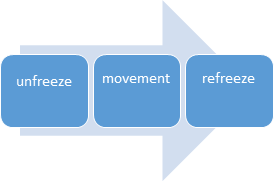Blog 5
Introduction
I am writing this blog to explore my thoughts on the leadership style, an overview of how several managers has influenced me throughout my academic career will be discussed. Real life examples of great leaders in food industry that started from the crash and ended up millionaires are mentioned and link with the golden words of Bill Gates. Some of the superlative skills that match my personality and the gap in skills required to become a success leader in the chosen industry will be highlighted. More or less the productivity of skills that CULC will do in my character building throughout my MBA will be explained.
Leaders whom I am inspired of?
I am greatly influenced by the thoughts of Great Autocratic leader, Adolf Hitler. As he once said, “the world will not help, the people must help themselves. Its own strength is the source of life” (Hitler, 2010). As an inspiration I have learned a lesson through his thoughts that one should never rely on others instead one should make himself capable enough to compete in the market and let others rely on you. I believe depending on others makes a man handicapped, so it better to work as a slave then as a handicapped, this reflects to the idea of bBenson i.e. it’s better to light a candle then to sit in darkness (Benenson,1961). Thus from the real life examples of great leaders mentioned below, Benson’s statement can be approved.
Sam Walton, the founder of Walmart is a self-made man and started everything from crash. He took an initiative by doing several odd jobs simultaneously to support his family at a very early age. Gaining the experience of working in different sectors of food industry Walton decided to open a retail shop by borrowing 80% of the money and using his personal saving. Though it was a great risk but he ended up successfully (Trimble, 1991).
Howard Shultz the founder and CEO of Starbucks, was a son of a truck driver, hard work and luck was the only asset he had. After doing a graduation from Northern Michigan University through scholarship, he worked in a small café Starbucks and within 2 years of hard work he purchased the coffee shop from the original owner and started working on the ambiguous coffee brand that we know today (Beckman 2014).
How I perceive myself as a manger in food industrial?
I have excellent team building and managerial skills, I always taken keen interest in group activities so as a team leader I would always be supportive for my team. I am always ready for accepting new challenges in life besides all this flexibility is my basic strength. Good oral communication and speaking Multi lingual are the key success factors of my life. I believe I can use my strengths in a managerial roles of food industry and will help me a lot in achieving my goals.
Leadership Skills that I will develop throughout my academic year at CULC
At CULC I believe I will get the opportunity to intensify and heighten my leadership at any level that will help me pursuing my career in food industry. Through my personal enthusiasm I want to achieve the knowledge and skills that lack in a leader. CULC will support me vigorously in building my intellectual thinking skills that meet up the standards for any managerial job in food industry. As a member of mentoring club my social networking skills will help me in dealing with multi-cultural people in the organization. To have a depth understanding on culture, Hofstede cultural dimensions can be useful, as shown below the comparison of culture between United Kingdom and Pakistan (Hofstede, 2015). As I have already been using it as an example in my previous blogs (Amanullah, 2015: blog 2).
Conclusion
I practically implement these words of wisdom in achieving my goals and target in food industry. I believe that working on my weaknesses and converting the threats in to opportunities can make me a successful leader. From the above example I totally agree with the golden words of great leader Bill Gates, i.e. if you are born poor it’s not your fault but if you die poor then it’s your own fault (Gates, 1995). If an individual end up poor that means he wasted all his life without giving any positive productivity to the society.
References
- Amanullah, R.,(2015)’ Diverse teams produce better results’ Amanullr [online] available from <https://amanullr.wordpress.com/2015/06/01/the-challenge-of-managing-diverse-teams/> [05 June 2015]
- Beckman, B. (2014) Howard Schultz: Ethical & Strategic Leadership [online] available at: <https://www.youtube.com/watch?v=GOO_ufk7utI> [22 June 2015]
- Benenson, P. (1961)Persecution, 1961.: Penguin Books
- CIPD Publishing (2009) Leadership qualities / actions [online] available from https://www.youtube.com/watch?v=CWglvWTsswE
- Gates, B., (1995) ’ The road ahead’: Myhrvold, N., & Rinearson, P.
- Hitler, A. (2010)Mein Kampf.: Clube de Autores
- Hofstede (2015) Hofstede’s Cultural Consequences: International Differences in Work Related Values [online] <http://jseaford.wordpress.com/2010/08/13/hofstedes-cultural-consequences-international-differences-in-work-related-values/> [22 June 2015]
- Trimble, V. H. (1991). Sam Walton: The inside story of America’s richest man. Signet.







